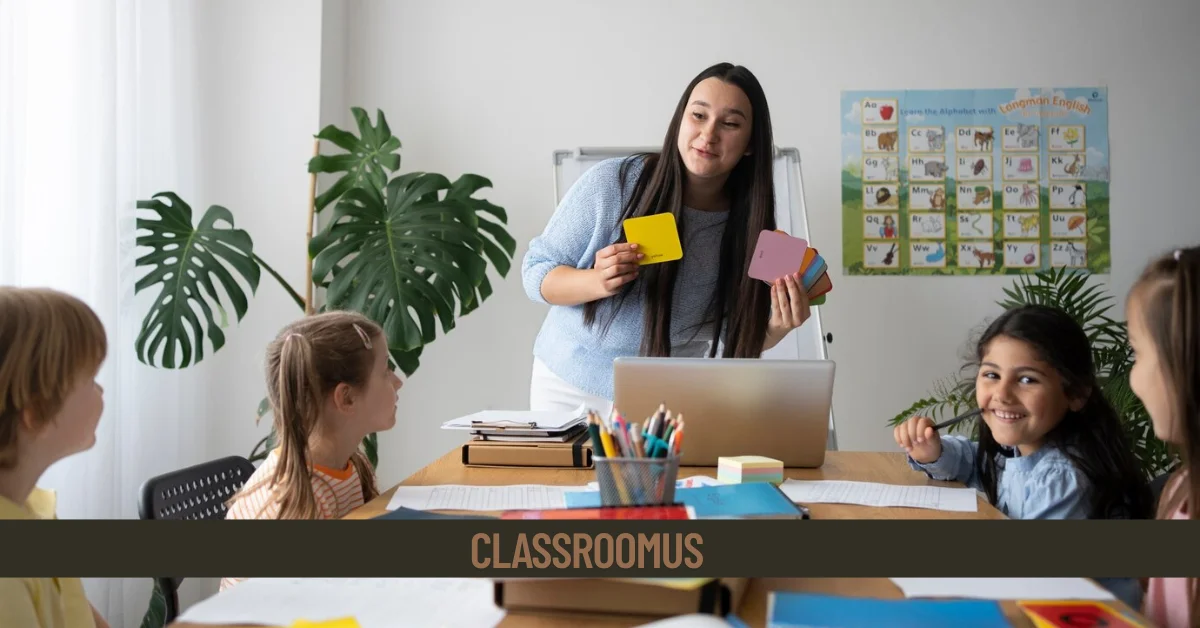Introduction to Classroomus
Welcome to Classroomus, a vibrant space where learning transcends traditional boundaries. In today’s rapidly evolving educational landscape, the need for diverse and innovative approaches to learning has never been greater. Every student is unique, and so should be their path to knowledge.
The world of education is not one-size-fits-all. It thrives on creativity, adaptability, and collaboration. From hands-on experiences to technology-driven techniques, there are countless ways to engage learners in meaningful ways. Join us as we explore various methods that cater to different learning styles while fostering an inclusive environment for all students!
Traditional Learning Methods
Traditional learning methods have long been the foundation of education. They typically emphasize a structured environment where teachers lead lectures, and students take notes. This approach often relies on textbooks and standardized testing.
In this setting, information is largely delivered from teacher to student in a one-way communication style. The focus tends to be on memorization rather than comprehension or critical thinking skills.
While effective for some learners, traditional methods may not cater to every student’s unique needs or learning pace. Rigid classroom structures can limit creativity and exploration, making it difficult for students who thrive in dynamic environments.
Despite these limitations, many educators still value the discipline that comes with traditional techniques. For some students, the familiar routine helps establish a sense of security and predictability essential for their academic success.
Hands-On Learning Approaches
Hands-on learning approaches are transformative. They immerse students in practical experiences that ignite curiosity and foster retention.
This method emphasizes active participation over passive listening. Students engage with materials, conduct experiments, or work on projects directly related to their studies. This tactile involvement can make complex concepts more accessible.
For instance, a science class might involve building simple machines or conducting chemical reactions. Such activities allow learners to witness theories in action.
Art classes benefit from hands-on techniques as well. Creating sculptures or painting not only enhances creativity but also strengthens fine motor skills.
These approaches cater to various learning styles, allowing kinesthetic learners to thrive while benefiting the entire classroom dynamic. When students manipulate objects and explore their surroundings, they gain deeper insights into the subject matter at hand.
Technology-Based Learning Techniques
Technology has transformed the educational landscape in remarkable ways. Interactive tools and digital resources have made learning more accessible and engaging for students.
Virtual classrooms allow learners to connect from anywhere, breaking geographical barriers. This flexibility enables personalized learning schedules that cater to individual needs.
Gamification is another exciting development. By incorporating game elements into lessons, educators can make complex concepts enjoyable. Students are motivated by challenges, rewards, and friendly competition.
Online platforms also foster a wealth of knowledge sharing. With forums and discussion boards, students gain insights from diverse perspectives. This promotes critical thinking and collaboration among peers.
Furthermore, adaptive learning technologies tailor experiences based on performance analytics. These systems adjust content difficulty to match student progress seamlessly.
Incorporating technology in education enhances engagement while preparing students for a tech-savvy world. It nurtures skills essential for future success, setting the stage for lifelong learning journeys.
Collaborative Learning Strategies
Collaborative learning strategies harness the power of teamwork. This approach encourages students to engage with one another, share ideas, and solve problems collectively.
In a collaborative classroom, students participate in group projects or discussions. They learn from each other’s perspectives while enhancing their critical thinking skills. The exchange of thoughts stimulates creativity and broadens understanding.
Peer teaching is another effective strategy. Here, stronger students can help those who may struggle with certain concepts. This not only reinforces knowledge but also builds confidence among peers.
Moreover, technology plays a vital role in collaboration today. Online platforms enable remote teamwork, allowing students to connect beyond physical boundaries. Whether it’s through shared documents or discussion forums, the possibilities are endless.
Fostering a sense of community within the classroom nurtures respect and empathy among learners. Students feel more valued when they contribute to a common goal together.
Personalized and Individualized Learning Styles
Personalized and individualized learning styles revolutionize the classroom experience. Every student brings their own strengths, interests, and challenges to the table. Recognizing this diversity is essential for effective education.
Tailored approaches allow educators to cater to unique needs. Some students thrive on visual aids while others prefer auditory or kinesthetic methods. By adapting lessons accordingly, teachers foster deeper understanding.
Incorporating student choice also enhances engagement. When learners select topics that resonate with them, motivation skyrockets. This autonomy creates a sense of ownership over their education.
Technology plays a pivotal role in personalization as well. With adaptive learning platforms, students can progress at their own pace, ensuring mastery before moving forward.
Embracing personalized learning cultivates an environment where every learner feels valued and empowered to succeed on their journey.
Combining Different Approaches for Optimal Learning
Combining various learning approaches creates a rich educational landscape. Each method brings unique strengths that can enhance understanding and retention.
For instance, integrating hands-on activities with technology allows students to experiment while using digital tools. This connection bridges theory and practice seamlessly.
Collaboration also plays a crucial role. When learners engage in group projects, they share insights from different perspectives. This interaction fosters deeper comprehension of the material.
Personalized strategies cater to individual needs, ensuring everyone is engaged at their own pace. By weaving together these diverse techniques, educators can create an inclusive environment where all students thrive.
Emphasizing flexibility encourages experimentation with what works best for each learner. A blended approach not only enriches lessons but also prepares students for real-world challenges by promoting adaptability and critical thinking skills.
Benefits of a Diverse Classroom Environment
A diverse classroom environment enriches the learning experience. It brings together students from various backgrounds and cultures, fostering a vibrant exchange of ideas.
When students interact with peers from different walks of life, they develop empathy and understanding. This exposure helps them appreciate perspectives outside their own experiences.
Additionally, diversity encourages creativity. A mix of viewpoints can lead to innovative solutions during group projects or discussions. Students learn to think critically and collaboratively in such settings.
Moreover, a rich tapestry of cultures enhances social skills. Students navigate differences in communication styles and problem-solving approaches, preparing them for real-world interactions.
It promotes inclusivity. Everyone feels valued when multiple voices are heard in the classroom. This sense of belonging motivates students to engage more actively in their education and pursue academic success with enthusiasm.
Conclusion
Classroomus represents a dynamic approach to education, integrating various learning methodologies that cater to different student needs. By blending traditional methods with hands-on experiences and technology-driven techniques, educators can create an engaging atmosphere where all students thrive.
The power of collaborative strategies fosters teamwork and communication skills essential for real-world scenarios. Personalized learning recognizes each student’s unique journey, allowing them to progress at their own pace. By embracing this diversity in teaching approaches, classrooms become vibrant spaces filled with curiosity and growth.
A well-rounded educational environment not only enhances academic achievement but also prepares learners for the challenges ahead. With Classroomus at the forefront of these innovative practices, the future of education looks promising. Embracing diverse paths in learning ensures that every student has the opportunity to reach their full potential while enjoying the process along the way.
FAQs
What does “Classroomus” refer to in this context?
Classroomus highlights the diverse educational formats and cultural differences in classroom experiences across countries.
How do classroom structures vary internationally?
For example, U.S. classes are often more frequent but shorter, while other systems may group learning into weekly modules or seminars.
What are modules, and how do they differ from classes?
Modules are common in European systems and refer to specific subjects or units of study, often combining lectures and seminars.
Why is understanding different classroom models important?
It helps students adapt to new environments and appreciate various teaching styles, schedules, and academic expectations.
How does Classroomus improve cross-cultural learning?
By comparing educational methods, Classroomus encourages open-mindedness and flexibility in global academic settings.

